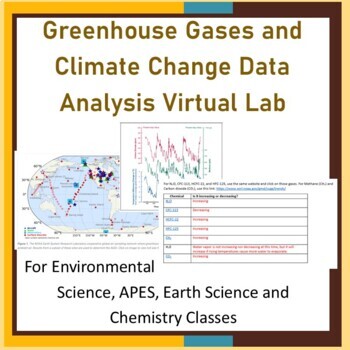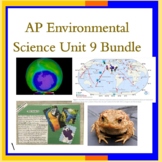Greenhouse Gases and Climate Change Data Analysis Virtual Lab
- Word Document File
- Webquests
Also included in
- Use these products to help your students learn important topics and skills.Price $10.00Original Price $11.25Save $1.25
- This bundle includes these resources for AP Environmental Science including:Study guides with EXACTLY what students need to know for each unit (more detail than the CED). Full practice exam.Lots of labs and activitiesGraphic organizersMath practiceDiagram and chart notes for specific, difficult topPrice $200.00Original Price $227.25Save $27.25
Description
Updated links as of March 2022. This lab for in-person or distance learning uses a variety of data from NOAA and other websites to help your students understand greenhouse gases, where they are found and whether they are increasing or decreasing.
Then, students analyze data about the effects of climate change with real-time data about temperature, precipitation and other data. Then, students delve into longer term data including ice-core data.
This lab walks students through each graph and data set to help scaffold so students will not be lost as they do the assignment.
Depending on level, this resource ranges from 90 min to 3 hours.
A total of 6 student pages with answer key.
Students need computer access-sharing in pairs suffices for in-person classes.




